ECTON MINE NEWS
2025 Heritage Open Days
This year EMET and PDMHS again jointly opened the mine for visits by the public, for the first time on two days. On Saturday 20th September there were visits to Salts Level, and on Sunday 21st September to Deep Ecton as in previous years. The Deep Ecton visitors benefitted from easier access via the new steps that had been installed last month. Altogether on the two days there were 226 visitors.
August 2025: 50-minute movie of submersible exploration at Ecton now on Youtube
We have summarised all of the exploration dives of submersible robots and ROVs at Ecton during the UNEXMIN and UNEXUP projects between 2019 and 2022, in a 50-minutes Youtube movie Ever Deeper
 August 2025: Donations by the Duke of Devonshire’s Charitable Trust and the UK Mining Conference in Cornwall
August 2025: Donations by the Duke of Devonshire’s Charitable Trust and the UK Mining Conference in Cornwall
Ecton Mine Educational Trust has received a generous grant from the Duke of Devonshire’s Charitable Trust as a significant contribution to the costs of accelerating safety and accessibility works both underground and on the surface. We have also received a donation from the UK Mining Conference in Cornwall, for the second year running, as a boost for the same purposes. These donations have enabled an important improvement for safe access to the Deep Ecton adit, work on which has now been completed.
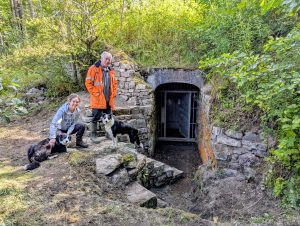
Because the entire site is a scheduled monument and also lies within a site of special scientific interest (an SSSI), any work was constrained to meet the highest standards to preserve both its historical integrity and the natural environment.
For many years, access to this entrance has entailed a high step onto a single stone block. The entrance walls have been repaired. A new set of stone steps have been built on the remains of a dam that was built across the adit in the early twentieth century. The steps reduce the risk of slipping when entering and exiting the mine.
This work was completed by Derbyshire Geotechnical (D-Geo) with the dry stone walling expertise provided by master stonemason Pete Roe, and his assistant Emmy Hoyes. The project was managed for EMET by trustee and mine manager Nick Hardie
Visitors to Deep Ecton, at the Heritage Open Day on 21st September 2025, and in years to come, will immediately benefit from the result!
30 Nov 2024 Interpretation Panel – and walk guide
As the final action of the balance cone restoration project, an interpretation panel has been designed and printed by Maltings Heritage Interpretation, and installed at the Ecton study centre. It includes information about the Ecton Mines and the balance cone (with a link to this website for further details), and a cnvenient map for a short walk around some of the historic mining features on Ecton Hill, including the engine house (which originally contained a Boulton & Watt steam winding engine) and the unique balance cone structure which surrounded a separate shaft used for suspending balance weights when lifting ore from the depths of the mine.
 16 Nov 2024 The Harold Sarjeant Award
16 Nov 2024 The Harold Sarjeant Award
At the annual general meeting of PDMHS (the Peak District Mines Historical Society) EMET received the Harold Sarjeant Award, jointly with Derbyshire Geotechnical and Peter Roe (master dry-stone waller) in recognition of outstanding work in the preservation of mining history and relics of the Peak District, following completion of the balance cone restoration, funded by FiPL (the farming in protected landscapes fund) managed by the Peak District National Park Authority.
14 Nov 2024 Ecton on TV
 On Thursday 14 November, Ecton Mine was featured in a report on BBC Midlands Today. Staffordshire correspondent Liz Copper presented an item in celebration of the removal of the Ecton Mines from Historic England’s “Heritage At Risk” register following completion of the balance cone restoration project.
On Thursday 14 November, Ecton Mine was featured in a report on BBC Midlands Today. Staffordshire correspondent Liz Copper presented an item in celebration of the removal of the Ecton Mines from Historic England’s “Heritage At Risk” register following completion of the balance cone restoration project.
Photo: Liz Copper interviewing EMET chair Anrew Mann beside the balance cone.
15 Sept 2024 Heritage Open Day
This is the one day in the year when members of the general public have an opportunity to go underground at Deep Ecton. This is the third year of what may become a regular annual event. This year we had a total of 121 visitors on a series of guided tours of the mine, wearing wellies (to wade through water in the adit) and waterproofs (to protect from the rain outside the mine, and occasional drips within), to see the main features that are now accessible – the two main shafts, the pipe workings, the pump chamber which was exceavated to house a 30-ft waterwheel, and the vast capstan chamber. For those who were thirsty and hungry after the tour, a short walk up to the study centre led to tea and cakes, and entertainment from a selection od videos showing some of Ecton’s activities, for schools as well as the recent submersible robot exploration of the flooded parts of the mine. If you missed out on this year’s visits, watch for next year’s announcements – all underground visits need to be booked in advance, as places are limited.
24-26 July 2024 Muon experiments
 Ecton Mine was the site of an exciting experiment this week: the use of natural muons (heavy electrons generated by cosmic ray collisions in the upper atmosphere). These penetrate rock to depths of hundreds of metres, and like medical X-rays can show regions of different density – such as sulphide ore deposits or mined-out cavities. Using the detectors in several different positions, the readings can be combined in a similar way to MRI scans. EMET provided the mine and volunteers to help carry the heavy equipment in and out of the mine, while the team, led by Prof Lee Thompson of Geoptic, as well as others from Sheffield University and Central Alliance, set up the muon detectors and electronics. We await the results following some intensive computation. Participants included Prof Lee Thompson and Eoin O’Sullivan (Geoptic), Robyn Evren (University of Sheffield), Dan Halton and Saksham Sharma (Central Alliance), Nick Hardie (EMET: Ecton Mine manager), Ian Smith and Steve Henley (also of EMET). [Click for some background information on muon tomography]
Ecton Mine was the site of an exciting experiment this week: the use of natural muons (heavy electrons generated by cosmic ray collisions in the upper atmosphere). These penetrate rock to depths of hundreds of metres, and like medical X-rays can show regions of different density – such as sulphide ore deposits or mined-out cavities. Using the detectors in several different positions, the readings can be combined in a similar way to MRI scans. EMET provided the mine and volunteers to help carry the heavy equipment in and out of the mine, while the team, led by Prof Lee Thompson of Geoptic, as well as others from Sheffield University and Central Alliance, set up the muon detectors and electronics. We await the results following some intensive computation. Participants included Prof Lee Thompson and Eoin O’Sullivan (Geoptic), Robyn Evren (University of Sheffield), Dan Halton and Saksham Sharma (Central Alliance), Nick Hardie (EMET: Ecton Mine manager), Ian Smith and Steve Henley (also of EMET). [Click for some background information on muon tomography]
19 July 2024 Balance Cone Restoration celebrations at Ecton
 A celebration was held on 19th July, high on Ecton Hill, at the Ecton Mine balance cone for completion of the restoration project, marking the removal of the last Ecton Mine structure from the Historic England “At Risk” register. The project restored this unique element of 18th century mining technology. The cone is a beehive-shaped stone structure around a shaft which was used for balance weights for the Boulton & Watt winding engine. The engine house itself also survives and was restored a few years ago by National Trust. The balance cone project was commissioned by the Ecton Mine Educational Trust, enabled by grant funding from the Peak District National Park
A celebration was held on 19th July, high on Ecton Hill, at the Ecton Mine balance cone for completion of the restoration project, marking the removal of the last Ecton Mine structure from the Historic England “At Risk” register. The project restored this unique element of 18th century mining technology. The cone is a beehive-shaped stone structure around a shaft which was used for balance weights for the Boulton & Watt winding engine. The engine house itself also survives and was restored a few years ago by National Trust. The balance cone project was commissioned by the Ecton Mine Educational Trust, enabled by grant funding from the Peak District National Park
We were entertained by mining songs from the West Bridgford male voice choir. Members of Ecton Mine Educational Trust and Ecton Hill Field Studies Association were joined by guests from The National Trust, Historic England, the Peak District National Park, the Chatsworth Estate (in its heyday the mine was owned by the Dukes of Devonshire), and Derbyshire Geotechnical Ltd who carried out much of the hard work of restoring the stone structure. The symbolic ribbon was cut by Phil Mulligan, CEO of Peak District National Park. The celebration was followed by tea and cakes (kindly provided by Anna Badcock of PDNPA) at EMET’s G.A.Cox Study Centre.
18 May 2024 Minsouth visit
Members of Minsouth visited Ecton and were given a condicted tour of Salts Level and Deep Ecton by Richard Shaw. Minsouth are a regular sposor of Ecton Mine Educational Trust and most recently funded the installation of a new water treatment system at the Study Centre.
March 2023 Carlson visited again
Carlson made a repeat visit to Ecton main winding shaft on 5th March, for further tests of their instrumentation, deployment equipment and software. A successful day at the top of the hill, a magnificent place to work when the weather is good.
Dec.2023 Balance Cone Restoration
 Ecton Mine Educational Trust, supported by a FIPL grant from the Peak District National Park Authority, is undertaking restoration of the Ecton engine balance cone. Cutting edge technology in the 1780s, the Ecton engine, built by Bolton and Watt wound copper ore from depths of up to 300m. At the peak of its production in the late 18th century this was the deepest mine in England. The balance cone shaft housed a counterbalance to support some of the weight of the winding rope and reduce the load on the steam engine which was the sixth ever to be commissioned in 1788. Restoration of the balance cone is the final part in preservation of the extensive historic mine site that is considered at risk by Historic England. The Ecton mines are maintained by EMET to facilitate education in the skills needed to provide current hi-tech materials that support the transition to a low carbon economy – a continuation of the role of the mine for the past three thousand years.
Ecton Mine Educational Trust, supported by a FIPL grant from the Peak District National Park Authority, is undertaking restoration of the Ecton engine balance cone. Cutting edge technology in the 1780s, the Ecton engine, built by Bolton and Watt wound copper ore from depths of up to 300m. At the peak of its production in the late 18th century this was the deepest mine in England. The balance cone shaft housed a counterbalance to support some of the weight of the winding rope and reduce the load on the steam engine which was the sixth ever to be commissioned in 1788. Restoration of the balance cone is the final part in preservation of the extensive historic mine site that is considered at risk by Historic England. The Ecton mines are maintained by EMET to facilitate education in the skills needed to provide current hi-tech materials that support the transition to a low carbon economy – a continuation of the role of the mine for the past three thousand years.
The restoration work is carried out under a contract with The Morton Partnership Ltd, project-managed by Lucy Newport. Conservation and construction work is being carried out by Derbyshire Geotechnical Ltd (D-Geo). From the detailed structural investigations required, we have already learned a great deal: in particular that it is not simply a ‘beehive’ pile of rocks and rubble, but has an interesting history that needs to be (and will be!) properly documented.
17 Sept.2023 Heritage Open Day
Deep Ecton was a hive of activity on Sunday 17th September, with a total of 114 visitors underground in 10 guided tours of Deep Ecton followed at the Geoff Cox Study Centre by tea, coffee and videos and a Q&A session with John Barnatt on the history and archaeology of Ecton. The visitor numbers are almost double those of the same event last year, organised in partnership with the Peak District Mines Historical Society.
Ecton Hill is an Ethel !
You may know of the Munros – the highest peaks in Scotland. Well the Peak District has its Ethels to climb. Ecton Hill is one of them! Named after Ethel Haythornthwaite, environmental campaigner and pioneer of the countryside movement. Come to Ecton and bag an Ethel!
1 July 2023 Carlson used Ecton as a test location
Carlson SW is a leading provider of high tech survey equipment and software. The Carlson team visited Ecton to test the latest borehole survey equipment which they have developed.
A slipring cable drum, with winch, lowered a probe through the 70 mm hole in the main winding shaft cap. The probe was lowered down to Deep Ecton level and was able to provide pictures, video and survey scans of the shaft. Further work was done in Salts level to test the high powered light and camera system fitted to the probe.
EMET can provide mine locations and assistance for testing equipment in an environment which is free from the production constraints that are found in working mines.

25 June 2023
Heritage Open Day 2023. On Sunday 17 September we will be opening Deep Ecton to the general public. There will be underground tours at 10:00, 12:30, and 15:00, with possible additional tours depending on demand. Full details and booking information can be found at https://www.heritageopendays.org.uk/visiting/event/ecton-copper-mines-underground-visit1 – Pre-booking: Required – The surface features and engine house are free to visit but underground tours must be pre-booked.
Booking Contact: The Peak District Mining Museum
Call: 01629 583834
Booking closes: 8 September 2023 15:30
May 2023
We are now a partner in the Resourcing Tomorrow conference and exhibition (in previous years, known as Mines and Money). As Europe’s largest mining and energy event dedicated to global sustainability goals, Resourcing Tomorrow brings together 2000+ key players from mining and energy companies, investors, brokers and exchanges, educators, government, regulators, suppliers and operators from around the world to benefit from insightful content, grow relationships and to do business at London’s Business Design Centre from 28-30 November 2023.
Resourcing Tomorrow is committed to educating and nurturing the future generation of mining professionals. Students and graduates are welcomed to join their Next-Gen Leaders Programme, which offers free admission to the event. Attendees can learn from industry leaders, acquire cutting-edge knowledge and explore potential career opportunities. Apply for a student pass here.
Further information: LinkedIn Twitter Facebook Instagram Website Email
February 2023
A new video on Youtube from the 2022 UNEXUP project visit to Ecton. And one that was produced immediately after the visit: Navigating through Ecton
10 Dec 2022

In October 2022 EMET purchased the Balance Cone land, historically known as the Winch Cone, from a local farmer. The Balance Cone is a Scheduled Monument and is a unique surviving historic stone structure in the UK (it was built around a shaft used for a balancing weight to assist operation of the adjacent winding shaft). The objective of the purchase was to enable EMET to apply for a FiPL (Farming in Protected Landscapes) grant to initially survey and assess the stability of the stone structure and then as a second stage, carry out remedial works to repair the structure and ensure the long term stability of the structure for the nation.
Currently assessment of the stability of the structure is underway.
14 Jan 2023 – received this week …
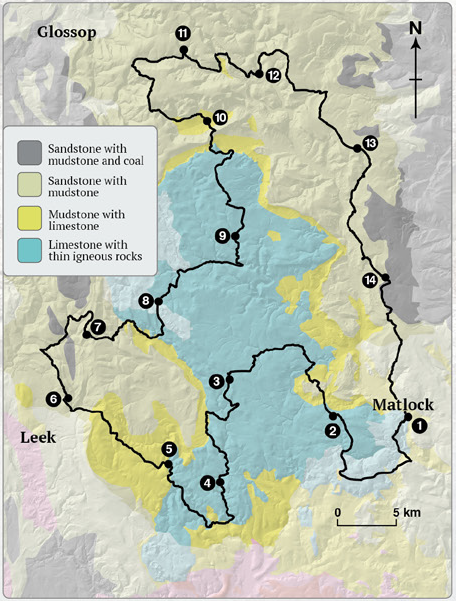
18 November 2022
The final UNEXUP project conference was held in Brussels on 18th November, and the results of robot and ROV dives at Ecton during 2021 and 2022 were presented. These included three series of dives by the BlueROV2 comercial submersible, and the March 2022 dives of the UX1-NEO robot.

22 Sept 2022
On 20-21 September, there was a series of four further dives using the BlueROV2 submersible, in the winding and pumping shafts and in the pipe workings, to test the capabilities of this ROV which was acquired for the project to carry out preliminary assessment of proposed dive sites for the UX1 series of robotic submersibles. These dives were also specified to address a number of archaeological and geological questions at Ecton Mine, and achieved some very interesting results, including proof of a postulated stepped ladderway from the Deep Ecton adit level into the main pipe workings.
17 Sept 2022
Heritage Open Day: this was an event organised by the Peak District Mines Historical Society, and EMET provided tours of Deep Ecton adit level. During the day, six scheduled tours took place, with a total of over 60 visitors seeing parts of the mine that are rarely open to such visits – followed by tea and cakes at the Training Centre.
22 May 2022
From 21-23 March there was a second visit by the UNEXMIN team, now in the follow-up project UNEXUP, deploying the new UX1-NEO submersible robot at Ecton. There were three dives: on 22 March in the pumping shaft, to explore and survey some workings that had been discovered in 2019; and two dives on 23 March in the winding shaft. The first of these went to the blockage at the accessible bottom of the shaft, to explore workings that had been identified in 2019: there was some drama during the ascent when a length of what appeared to be nylon fishing line in the shaft became entangled in the robot’s thrusters. The final dive passed through a ‘window’ in the eastern side of the shaft, into the upper pipe workings, and explored these to the north beyond the area that had been visited in 2019. A large quantity of data was obtained from these dive, and the results of interpretation will be published in due course.
11 November 2021
Talk given at the IOM3 MTD conference ‘Legacies of Mineral Extraction and Sustainability Opportunities’ at Newcastle on 10-11 November 2021. “Making the Most of Abandoned Mines: The Ecton Mine Educational Trust”

9 October 2021
Something completely new for Ecton: the excellent acoustic properties of the pump and whim chambers were tested by choral singing. The West Bridgford Male Voice Choir sang at Ecton, a selection of mining songs! This was recorded, and the recordings can be heard here. Or you can listen to a short promotional video These songs were recorded to raise funds for charities supported by the West Bridgford choirs. Please contact EMET secretary Phil Read if you are interested in donating.
30 September 2021
After several months in which the mine was strictly closed due to the pandemic, some activities are re-starting. On 28-30 September, we tested a new submersible ROV (remote-operated vehicle) acquired for the UNEXUP project for preliminary assessment of sites before use of the expensive and virtually irreplaceable UX1-NEO robot. On 28th Sept, initial tests were done in open water at Rudyard Lake. Despite very wet weather, a number of hardware and software bugs were identified and fixed, and the weight distribution was adjusted to give neutral buoyancy for maximum manoeuvrability. Then on 29th and 30th Sept., the ROV was deployed in the pipe workings. Advantage was taken to carry out new exploration in areas not visited by the UNEXMIN project. New discoveries were made, which will be documented separately. The ROV dived to 25m depth – at which water entered through a badly sealed lighting unit – but after fixing the leak, several further dives were completely successful.
14 December 2020
Talk given at the MDSG (Mineral deposits Study Group) winter conference.
9 October 2020
Presentation to the Minsouth meeting on Intelligent Mining on 8 Oct 2020. View the video here (32 minutes).
Ecton Mine also featured today in a ‘fireside chat’ session between Jacqui Coombes and Steve Henley during the AMIRA Global ROAR conference on Remote Operations, Automation & Robotics
September 2020
The whole of Mining History vol.21 no.1 (the journal of the Peak District Mines Historical Society) is devoted to the archaeological and geological discoveries from UNEXMIN dives at Ecton.
10 April 2020
Despite the Covid-19 lockdown, the Cornish Institute of Engineers 2020 AGM took place – online. An invited lecture was presented by Steve Henley, on the UNEXMIN project and discoveries at Ecton.
Slideshows can be downloaded:
And a video on the Ecton trials of the UNEXMIN UX-1 robot.
December 2019
Article by Stephen Henley in CREG Journal 108. “Introducing the UNEXMIN Robot for Surveying Flooded Underground Spaces”
1 November 2019
A selection of videos from the UNEXMIN trial in May 2019.
- Professional video with narration by John Barnatt
- First and last dives at Ecton. Computer models from sonar data
- Ecton Mine – mysteries below water level (from a Powerpoint slide show)
- Pumping shaft -65m level – wall or dam
- Winding shaft 40-58 metres
- Passage at -54m depth in pumping shaft
- Richard Shaw & John Barnatt – archaeological discoveries (presentation at UNEXMIN final conference)
- -97 metres depth in the winding shaft
- Ecton field trials – very short video
16 October 2019
A paper on the UNEXMIN trial has been published in Mineral Planning, No.185, October 2019. This project has received funding from the European Union’s Horizon 2020 research and innovation programme under grant agreement No 690008. “Robots explore flooded mine”, by S. Henley. A PDF copy can be downloaded here
22 August 2019
It is with great sadness that we record the death on 22nd August, after a long illness, of Reginald Wynniatt-Husey, EMET trustee and treasurer, and a good friend to us all. He will be sorely missed.
30 June 2019
Article about UNEXMIN at Ecton in the Buxton Advertiser
June 2019

The month of May saw Ecton study centre become a version of Houston Mission control, with the UNEXMIN submersible robots diving into the depths of the mine. A shipping container was rented for the month to act as secure storage as well as an engineering workshop to carry out maintenance of the two robots which were used. EMET had constructed launch platforms at three sites underground: the Great Shaft, the winding shaft, and the pipe workings. Altogether ten dives were achieved, and an enormous volume of new data were obtained including literally millions of images from the five cameras mounted on each robot, as well as scientific data from on-board instruments. Shafts, cross-cuts, and mined-out regions were mapped in detail by sonar and structured-light sources (laser stripes).
Geology and archaeology have yielded a number of surprises among the high-qualty data recovered, which EMET and UNEXMIN consortium scientists will be working on for years to come. Among the many highlights of the month, Ruth George MP (Labour, High Peak) paid a visit and saw the robots in operation underground as well as at Mission Control.
19 November 2018

Mark Hudson of Geoterra brought his Nautilus ROV to Ecton for a preliminary exploration of two of the shafts and the pipe. The first dive was in the pumping shaft, with the ROV descending to about 50 metres depth. No serious obstacles were encountered, though it found a few timbers including the remains of some staging which might be a hazard for UNEXMIN as there appear to be a number of loose rocks.

At times, visibility was affected by a large amount of calcite ‘snow’ – from calcite that crystallises on the water surface and sinks whenever disturbed. It accumulates on the sides and any horizontal surfaces within the shaft, and movement of the ROV disturbed it. Care will need to be taken to avoid such disturbance as much as possible in the UNEXMIN trials. In the winding shaft and the pipe, the water was much clearer. Geometry of the pipe is more complex than it appears from surface, and the ROV only explored to fairly shallow depths to avoid risk of snagging the umbilical cable. It appears that there may be at least two routes leading downwards, as well as side passages. There is much for UNEXMIN to explore!
November 2018

Major works have now been completed, on restoration of the entrance to Deep Ecton adit, which was becoming structurally unsafe. This work was carried out by a local contractor D-Geo, overseen on behalf of EMET by Nick Hardie of Hard Rock Mining Ltd, with the arching rebuild led by Peter Roe a master mason from Swaledale. The work was monitored by John Barnatt, who did the archaeological watching brief that was a requirement of Historic England, as the entrance lies within a Scheduled Monument.
John Barnatt’s full archaeological report is available here. A summary will also be published in Mining History in due course.
26 June 2018
Richard Shaw of EMET was in Finland this month for the first live trials of the UNEXMIN submersible, in the flooded Kaatiala pegmatite mine. His specific focus was to see the launch and recovery methods, which are likely to be similar to those that will be needed at Ecton. Launching used a standard small hydraulic crane.
6 May 2018
In preparation for the UNEXMIN pilot tests to take place in 2019, it is necessary to rebuild the stone arching of the outermost few metres of the Deep Ecton adit. This is to be done by a ‘cut and cover’ method, digging a trench, rebuilding the stone arch, and then re-filling the trench. This will necessitate partial or complete demolition of a small ruined stone building which was originally a part of a dairy/creamery complex on this site. Before this can be done, we need to make a detailed archaeological record. This will consist of a series of photographs, and we also plan to produce a 3D model from a large set of photographs of the exterior and interior of the building, using Photomodeller software, which we previously used to generate a 3D model of the dressing-floor wall. A preliminary set of photographs were taken for this purpose on 4th May, and a further series of photos may be taken when the trees around the northern gable end have been removed.

29 Sept 2017

Over the summer, a ground penetrating radar (GPR) survey was carried out over the top of Ecton Hill by TerraVision with the principal purpose of locating any previously undetected ancient shallow underground mine workings. A number of traverses crossed the area in which these were suspected and in which some known workings had already been identified. Apart from detecting very clearly these known workings, a number of new targets were identified. Although most of these are too deep for archaeological excavation, the Trust now has an opportunity to try to match them against existing surveys. The GPR work also provided unexpected evidence of geological structures on the hill which potentially can be linked with geology observed in the accessible underground workings. The survey was carried out by Natalie Staffurth and Daniel Sherwin of Terravision, and Dan’s later de-briefing session with us was very much appreciated!

5 August 2017
Filming in Deep Ecton: On 1st August a team from Boomerang visited Deep Ecton to carry out filming underground for a documentary series they are making, intended for broadcast on Channel 5 later this year. This coincided with another visit by Mark Hudson of Geoterra, as well as Stuart Cadge of GeoSLAM, for further laser scanning for 3D computer modelling of accessible parts of Ecton Mine, in connection with the UNEXMIN project.
1 July 2017
Laser scan survey of Deep Ecton and Salts Level: On 27th and 28th June 2017, Mark Hudson, MD of Geoterra, assisted by John Barnatt and Richard Shaw of EMET, carried out a full laser scan of the accessible parts of Deep Ecton, the ladderway, and Salts Level. Preliminary images show that the survey has produced an excellent 3D model, for the first time linking the two levels with an accurate and detailed graphical representation, and providing data to be combined with a 3D survey of the flooded parts of the mine (which we expect to obtain from the UNEXMIN project).
4 May 2016
UNEXMIN consortium visit to Deep Ecton: On 3rd May 2016, there was a visit to Ecton by members of the UNEXMIN consortium to help them decide on some details of the robot design and on methods for transport, launch, and recovery of the robot.
31 March 2016
Dressing floor progress – 3D model from photos. On 22 March 2016, Mike McLoughlin of Rockmate Ltd visited Ecton Mine to run tests of software to generate 3D computer models from a series of overlapping photographs. From 49 overlapping high-resolution photos of the restored dressing-floor wall he was able to produce a detailed 3D model, which he has made available to EMET.


1 Feb 2016: Robots Delve Hidden Depths of Flooded Mines
Historic Ecton Copper Mine in Staffordshire Receives EU Research Project Funding
Ecton Mine Educational Trust (EMET) has become a consortium member for the €4M (£3.5M) UNEXMIN project for underwater exploration of flooded mines using submersible remote-controlled robots, miniaturised and adapted from deep sea technology. It will enable a full survey of the submerged workings, to gain geological and archaeological information.
The 4-year project with 13 consortium members from 7 EU countries has just received the go-ahead from the European Commission and will enable new technology to develop potential strategies to re-work some of Europe’s currently abandoned mines many of which may still contain critical raw materials vital for the UK and Europe’s economy.
It starts with a meeting in February 2016 at Miskolc University, Hungary, who are coordinating the project. This is followed by pilot deployments at mines in Finland, Portugal and Slovenia in progressively more challenging conditions concluding with a full-scale study at Ecton in early 2018.

1 Feb 2016: Dressing Floor Discoveries
This is just a preliminary note. Archaeological work on the wall behind the Dressing Floors has revealed ore hoppers and ore chutes whose presence had not been suspected. At least one is very well preserved, including the wood of the ore chute – last used more than 100 years ago.
2015: Boulton & Watt engine house at Ecton

Over the last few months, intensive archaeological and restoration work has been carried out on the engine house, by the National Trust in collaboration with the Peak National Park Authority, and volunteers. On Friday 6th June there was a formal ‘opening’ by Francis Pryor MBE (the Time Team archaeologist), at which the restoration and archaeological work were shown and explained by Paul Mortimer (NT), John Barnatt (PDNPA), and colleagues in both organisations as well as EMET and EHFSA. Both outside and inside the building, the National Trust has erected a series of explanatory boards which interpret the history and explain the engineering and geological features, as well as the broader environmental context of the Ecton area.
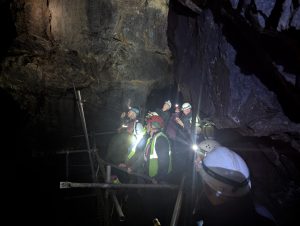
 August 2025: Donations by the Duke of Devonshire’s Charitable Trust and the UK Mining Conference in Cornwall
August 2025: Donations by the Duke of Devonshire’s Charitable Trust and the UK Mining Conference in Cornwall
 16 Nov 2024 The Harold Sarjeant Award
16 Nov 2024 The Harold Sarjeant Award




 The powder house, where dangerous explosives were stored. This small shed was placed well away from other buildings and was erected in 1884. The interior was originally lined with wooden panels as an added precaution against accidentally creating sparks.
The powder house, where dangerous explosives were stored. This small shed was placed well away from other buildings and was erected in 1884. The interior was originally lined with wooden panels as an added precaution against accidentally creating sparks.

 was lowered on one side and it was converted to a field barn. The steam engine was located in the far half of the building, while its boiler was in the near half. A short distance upslope there was a small reservoir pond for the boilers fed by water brought up from the mine.
was lowered on one side and it was converted to a field barn. The steam engine was located in the far half of the building, while its boiler was in the near half. A short distance upslope there was a small reservoir pond for the boilers fed by water brought up from the mine.


 In the 1760s-80s the internationally important Deep Ecton Copper Mine made a fortune for the Dukes of Devonshire. The first copper was mined here long before, in the Bronze Age over 3,500 years ago. The Dukes, who owned northern and western parts of the hill, had their mines worked in-house for over 50 years from 1760. From the 1820s private mining companies embarked on a fruitless search for further rich ore deposits. The mines were finally abandoned in 1889. While the 19th century ventures lost investors’ money, with them at best only finding other peoples’ leavings, they kept local miners in work for decades.
In the 1760s-80s the internationally important Deep Ecton Copper Mine made a fortune for the Dukes of Devonshire. The first copper was mined here long before, in the Bronze Age over 3,500 years ago. The Dukes, who owned northern and western parts of the hill, had their mines worked in-house for over 50 years from 1760. From the 1820s private mining companies embarked on a fruitless search for further rich ore deposits. The mines were finally abandoned in 1889. While the 19th century ventures lost investors’ money, with them at best only finding other peoples’ leavings, they kept local miners in work for decades.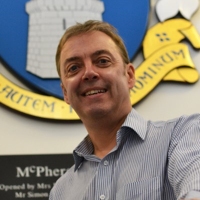
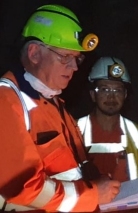

 Peter has nearly 50 years experience mostly at the sharp end of the minerals industry. He is a metallurgist who started in the steel industry prior to his degree at Cambridge University. He held senior positions with Anglo American on the Zambian Copperbelt, and at Glebe Mines fluorspar operation in the Derbyshire Peak District; and has been an independent freelance since 2000. He has had connections with Ecton Mine and Geoff Cox since the mid-1980s. He is Secretary of The British Aggregates Association, a member of the CBI Minerals Group and the UK National Minerals Forum; and has various business interests in the industrial minerals industry in the UK, Europe and globally; and is also a Director of MAUK (Mining Association of the UK) and Amemptos Music.
Peter has nearly 50 years experience mostly at the sharp end of the minerals industry. He is a metallurgist who started in the steel industry prior to his degree at Cambridge University. He held senior positions with Anglo American on the Zambian Copperbelt, and at Glebe Mines fluorspar operation in the Derbyshire Peak District; and has been an independent freelance since 2000. He has had connections with Ecton Mine and Geoff Cox since the mid-1980s. He is Secretary of The British Aggregates Association, a member of the CBI Minerals Group and the UK National Minerals Forum; and has various business interests in the industrial minerals industry in the UK, Europe and globally; and is also a Director of MAUK (Mining Association of the UK) and Amemptos Music.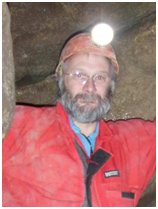 I am an exploration and mining geologist (C. Geol) with over 25 years of experience in the deep geological disposal of radioactive waste and 7 years of experience of exploration, environmental impact assessment and mining feasibility for the Kayelekera uranium deposit in Northern Malawi, Africa. I retired from the British Geological Survey in 2016 and am currently a member of the Government’s Committee on Radioactive Waste Disposal. I undertook a PhD on caves and mines in the Peak District and, as an active caver and mine explorer, have been studying the underground world of the Peak District since the mid 1970’s, including the mines of the Ecton Area. I am a director (editor) of the Peak District Mines Historical Society and the mine manager of their Temple Mine in Matlock Bath.
I am an exploration and mining geologist (C. Geol) with over 25 years of experience in the deep geological disposal of radioactive waste and 7 years of experience of exploration, environmental impact assessment and mining feasibility for the Kayelekera uranium deposit in Northern Malawi, Africa. I retired from the British Geological Survey in 2016 and am currently a member of the Government’s Committee on Radioactive Waste Disposal. I undertook a PhD on caves and mines in the Peak District and, as an active caver and mine explorer, have been studying the underground world of the Peak District since the mid 1970’s, including the mines of the Ecton Area. I am a director (editor) of the Peak District Mines Historical Society and the mine manager of their Temple Mine in Matlock Bath.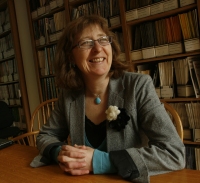 mongst geologists and others involved in the application of geoscience, particularly through the promotion of professional titles such as CEng, CGeol, and EurGeol. She has served on the Council of the Geological Society of London and is a past President of the European Federation of Geologists. For many years, she has been a member of the Pan European Reserves and Resources Reporting Committee (PERC).
mongst geologists and others involved in the application of geoscience, particularly through the promotion of professional titles such as CEng, CGeol, and EurGeol. She has served on the Council of the Geological Society of London and is a past President of the European Federation of Geologists. For many years, she has been a member of the Pan European Reserves and Resources Reporting Committee (PERC). Phil in Organic Chemistry, Nottingham Uni 1977-79, awarded 1981
Phil in Organic Chemistry, Nottingham Uni 1977-79, awarded 1981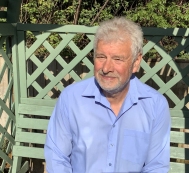 I am a geoscientist with more than 45 years of experience. After working as a mine geologist in the Yorkshire Coalfield for 12 years, I moved on to seismic exploration for coal, potash and other minerals focussing on seismic interpretation and delineating geological structure to aid mine planning. My prospect experience includes projects in UK, Spain, Turkey, Australia, Africa, Argentina and Canada.
I am a geoscientist with more than 45 years of experience. After working as a mine geologist in the Yorkshire Coalfield for 12 years, I moved on to seismic exploration for coal, potash and other minerals focussing on seismic interpretation and delineating geological structure to aid mine planning. My prospect experience includes projects in UK, Spain, Turkey, Australia, Africa, Argentina and Canada.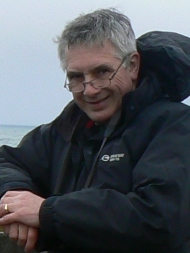 ng and engineering around the world. Although I am now retired I continue to hold Board appointments with national and international regulatory and standards organisations which I find professionally stimulating and thoroughly rewarding.
ng and engineering around the world. Although I am now retired I continue to hold Board appointments with national and international regulatory and standards organisations which I find professionally stimulating and thoroughly rewarding.